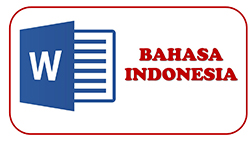Metode Belajar Mandiri sebagai Pengembangan Kreativitas Berfikir Siswa pada Mata Pelajaran Al-Qur’an Hadits di SMP Jati Agung Wage Taman Sidoarjo
Abstract
There are so many methods applied in the world of learning, related to the implementation of the 2013 curriculum, not only emphasizing pursuing material targets, but maximizing the learning process and developing student competencies, so that the learning process can be maximized and will produce quality output. Therefore students must be conditioned to carry out structured learning activities independently, for all general and religious subjects such as the Al-Qur'an Hadith can also be studied with independent learning methods so that students better understand the problems that arise and they will be younger to find and determine the solution it needs. This research method uses a qualitative descriptive approach. Namely a research procedure that produces descriptive data in the form of written or spoken words from people and observable behavior. The approach is directed at the individual's background holistically (intact). This study chose a qualitative research approach because the research problems were holistic, complex, dynamic and meaningful. And researchers intend to understand social situations in depth, find patterns and theories. To get accurate data, this research uses observation, interview, documentation, and questionnaire methods. Research result. has implemented the independent learning method in the subject of al-Qur'an Hadith only in classes classified as fluent class (L) in reading the Koran, namely classes VII A and VII B so as to explore some of the material contained in al- Their hadith Qur'an has no difficulty, be it material about tajwid, the meanings of mufrodats, and the contents of the verses of the Qur'an. This independent learning method can hone students' skills to find or solve problems given by the teacher with a sense of responsibility and self-confidence. Meanwhile, if it is implemented in a class that is not fluent (TL), then this method will not be suitable because their capacity in reading the Qur'an is very lacking
Downloads
References
Arikunto, Suharsimi. (2002). Prosedur Penelitian Suatu Pendekatan Praktek. Rineka Cipta. Jakarta.
Bungin, Burhan. (2001). Metode Penelitian Kualitatif. PT. Raja Grafindo persada. Jakarta.
Hamzah, (2007). Profesi Kependidikan. Bumi Aksara. Jakarta.
Moleong, Lexy J. (1996). Metodologi Penelitiaan Kualitatif . Remaja Rosda Karya. Bandung.
Mudjiman, Haris. (2007). Belajar Mandiri. LPP UNS dan UNS Press, Surakarta.
Mulyasa, E. (2007). Kurikulum Tingkat Satuan Pendidikan. Remaja Rosdakarya. Bandung.
Munandar, Utami. (2004). Pengembangan Kreativitas Anak Berbakat.: Rineka Cipta. Jakarta.
Nursisto, (2002). Peningkatan Prestasi Sekolah Menengah. Insane Cendekia. Surabaya.
Sugiyono, (2007). Metode Penelitian Pendidikan Pendekatan Kuantitatif, Kualitatif, Dan R&D. Alfabeta. Bandung.
Webe, Agung. (2005). Belajar Mandiri. Ar-Ruzz Media, Yogyakarta.
Wycoff, Joyce. (2003). Menjadi Super Kreatif Melalui Metode Pemetaan Pikiran. Kaifa. Bandung.





.png)










